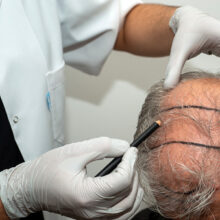Label Alert: 3 Things to Avoid When Shopping For Clean Beauty Products
- Published: Monday, April 25th 2016
- in Beauty
When was the last time you read the labels on your cosmetics and skin care products?
I believe in clean beauty, and I’m not alone: The global demand for organic personal care products is expected to reach $13.2 billion by 2018. So how can you know if your cosmetic and body care products are clean? Watch out for these three skin care red flags when reviewing product labels.
Parabens
Parabens are antimicrobials used as preservatives that prevent contamination. When you use products that contain parabens they can enter your body through the skin.
What’s the problem?: Some of the major concerns about parabens include contributing to breast cancer, potential developmental and reproductive toxicity, allergic reactions, and hormonal disruptions. Pregnant women and young children are particularly vulnerable to paraben exposure.
How to recognize them: Parabens are easy to identify when looking at an ingredient label: The most common ones are methylparaben, propylparaben, butylparaben, and ethylparaben. Methyl- and propylparaben can cause skin sensitivity and lead to allergic reactions.
Dyes
You may find dyes in soaps, lotions, toothpaste, shampoos, styling creams, bath gels, and more. Many hues are made of coal tar, which may contain arsenic or lead that can deposit toxins onto the skin.
What’s the problem?: These toxins increase your risk of skin sensitivity and irritation and are known for blocking pores and increasing acne breakouts. Artificial colors can be especially toxic when absorbed through the mouth, so I urge you to shop for natural toothpaste and mouthwashes.
How to recognize them: Manufacturers do not have to disclose if they are using a dye, so look for “used for color” on the label. Common dyes, such as Yellow Dye #5, may be listed. If you like seeing color in your products, look for those tinted with natural dyes made from plants and herbs.
Fragrances
Did you know synthetic fragrances used in cosmetics can contain as many as 200 ingredients? Often the labels will read “fragrance,” which means there’s no way to truly know what chemicals are inside. With so many natural fragrances on the market, there’s no need for synthetic fragrances within our daily personal care products; some of my favorite natural scents are rose, ylang-ylang, and jasmine.
What’s the problem?: Health conditions often caused by the chemicals in synthetic fragrances include headaches, dizziness, rashes, vomiting, and hyperpigmentation.
How to recognize them: The label will say “Fragrance of XX,” or “Proprietary Oil Fragrance.”
A synthetic fragrance may also be positioned as “Aroma of XX” or “Scent of XX.” Be especially careful to avoid added fragrance in clothing detergents and fabric softeners; after all, clothing covers your whole body and is worn all day.



